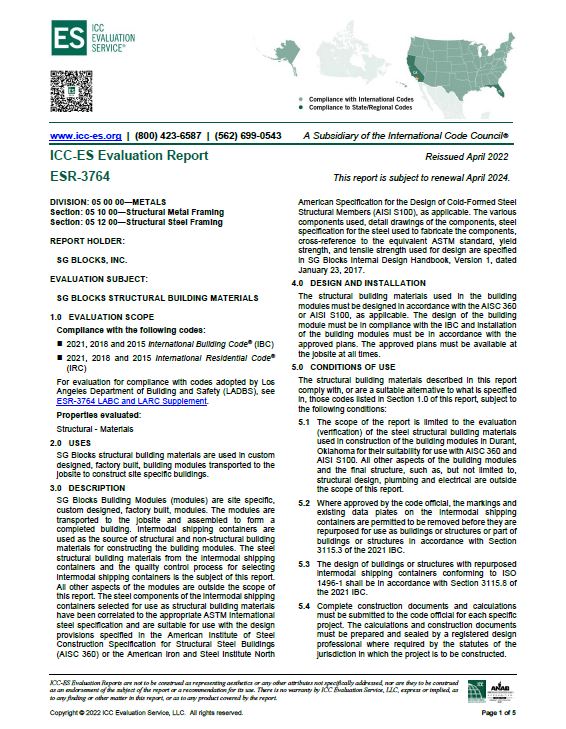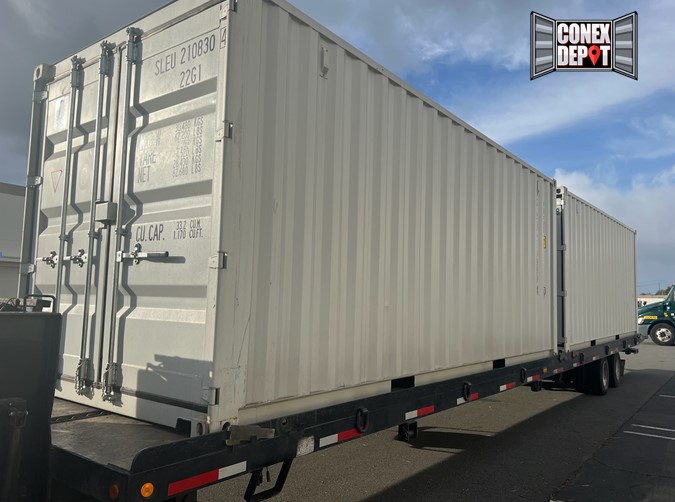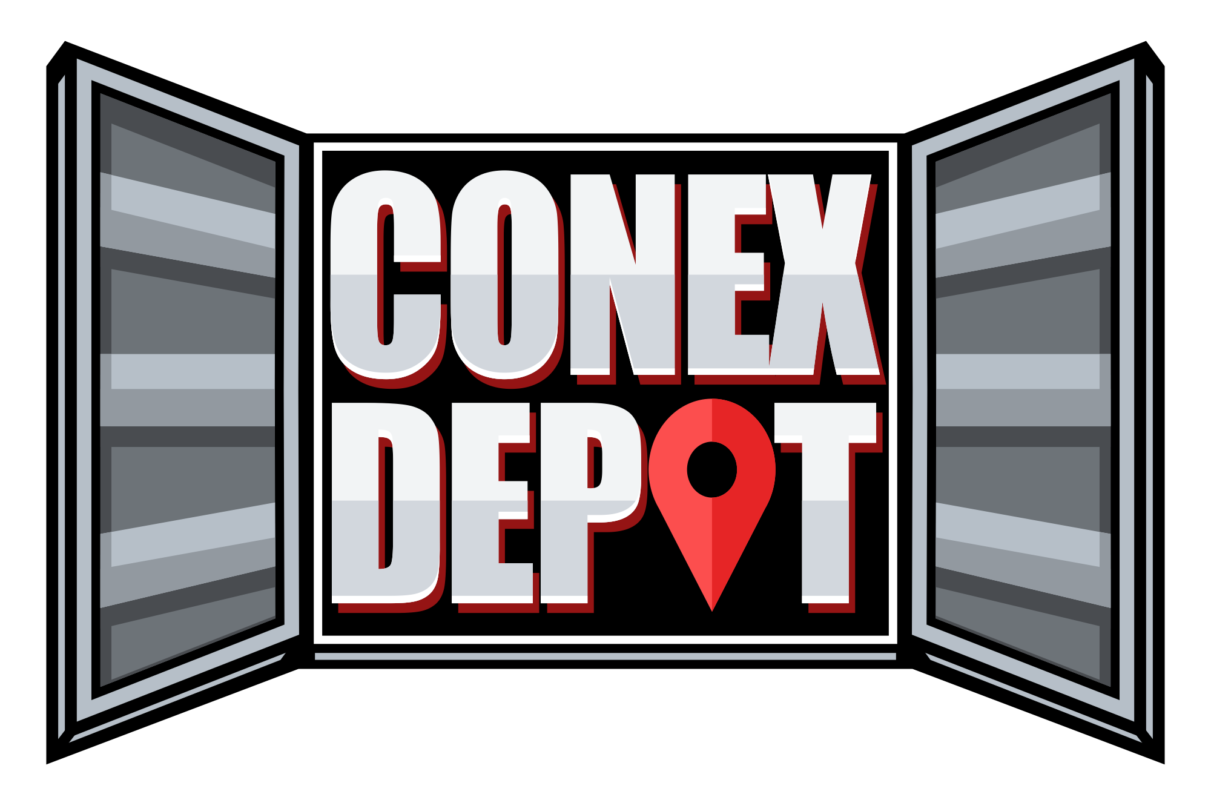Shipping Containers For Sale
ICC-ES code and SG Blocks structural building materials Guide
Conex Depot provides this information for our customers who have questions about the ICC-ES and related terms.
This article explains what the ICC-ES code is and how it applies to shipping containers. We will define some industry terms that are mentioned in the documents as a resource for customers who have questions about the ICC-ES code.

Topics cover the ICC-ES code, SG Blocks structural building materials, and the American Institute of Steel Construction Specification for structural Steel Buildings (AISC 360) and the American Iron and Steel Institute North American Specification for the Design of Cold-Formed Steel Structural Members (AISI S100)
Terms
ICC-ES code
SG Blocks structural building materials
AISC 360 and AISI S100 specifications
What is the ICC-ES code?
The International Building Code (IBC) is a set of model building codes developed by the International Code Council (ICC) that is widely used in the United States and other countries to regulate the design, construction, and maintenance of buildings. The IBC guidelines for structural materials establish minimum requirements for the design and use of building materials such as concrete, masonry, steel, and wood to ensure that buildings are safe and structurally sound.
In recent years, there has been growing interest in using shipping containers as a structural building material. Shipping containers are durable, readily available, and can be repurposed for a variety of uses such as homes, offices, and retail spaces. However, using shipping containers as a structural material requires careful consideration of their structural properties and compliance with building codes and regulations.
The IBC guidelines for structural materials provide guidance for using shipping containers in construction projects. For example, the guidelines require that shipping containers be structurally reinforced with additional steel framing and corner castings to ensure their stability and load-bearing capacity. The guidelines also specify requirements for insulation, ventilation, and weatherproofing to ensure that the containers meet energy efficiency and environmental standards.
Furthermore, the guidelines require that any modifications made to the shipping containers be done in compliance with building codes and regulations, and that the final structure meets safety and accessibility requirements. This includes ensuring that the building is fire-resistant, meets seismic requirements, and provides adequate means of egress in case of emergency.
In summary, the IBC guidelines for structural materials provide important guidance for using shipping containers as a structural building material. Adherence to these guidelines can help to ensure that shipping container structures are safe, structurally sound, and comply with building codes and regulations.
How does this apply to shipping containers?
According to the guidelines (see PDF document):
The design of buildings or structures with repurposed intermodal shipping containers conforming to ISO 1496-1 shall be in accordance with section 3115.8 of the 2021 IBC”
Download PDF of ICC-ES Evaluation Report ESR-3764
Helpful link: ICC-ES website http://www.icc-es.org/

What are the SG Blocks structural building materials guidelines?
A short summary of the ICC-ES evaluation report for structural building materials. SG Blocks is a leading designer and fabricator of innovative modular structures using cargo shipping containers. Their structural building materials guidelines provide a comprehensive overview of the benefits of using shipping containers as building materials, including their durability, versatility, and eco-friendliness.
The guidelines also include information on the design and construction process, as well as the various customization options available. SG Blocks’ building materials are ideal for a wide range of applications, from residential homes and commercial buildings to educational facilities and disaster relief structures. Overall, SG Blocks’ guidelines highlight the unique advantages of using shipping containers as a sustainable and cost-effective solution for modern building projects.
SG Blocks is a company that specializes in creating innovative building materials using shipping containers. The company’s structural building materials guidelines recommend using a minimum of two standard shipping containers for structural integrity, as well as reinforcing the containers with additional steel framing and corner castings. They also recommend using high-quality insulation and weatherproofing to ensure the building is energy-efficient and can withstand extreme weather conditions. Additionally, the guidelines recommend using recycled or sustainable materials whenever possible to minimize environmental impact. Overall, SG Blocks’ building materials offer a durable and eco-friendly alternative to traditional building methods.
The ICC-ES (International Code Council Evaluation Service) is an organization that evaluates building products for compliance with building codes and standards. Their evaluation report for structural building materials provides an independent assessment of the materials’ performance and safety characteristics. The report typically includes a summary of the product’s specifications, test results, and installation instructions, as well as any limitations or conditions of use. The evaluation report can be used by building officials, architects, engineers, and contractors to determine whether a product is suitable for a particular application and to help ensure compliance with building codes and regulations. Overall, the ICC-ES evaluation report provides a valuable tool for evaluating the safety and suitability of structural building materials.
What is the ICC-ES evaluation report?
The ICC-ES (International Code Council Evaluation Service) evaluation report provides an independent review of the performance of structural building materials, such as engineered wood products, concrete, and steel. The report assesses whether the materials comply with building codes and standards, and provides information on their structural, fire, and environmental performance. It also includes test results, technical data, and installation guidelines to assist builders and designers in selecting appropriate materials for their projects.
The ICC-ES evaluation report is an important tool for ensuring that structural building materials meet safety and quality standards and can be used with confidence in construction projects.
Summary of the International Building Code IBC guidelines for Structural Materials
The International Building Code (IBC) is a model building code used by many countries to regulate the construction of buildings. The IBC guidelines for structural materials set out the minimum requirements for the design, construction, and use of building materials such as concrete, masonry, steel, and wood. The guidelines specify the load capacities, structural properties, and performance requirements for these materials to ensure that buildings are safe and structurally sound. The IBC guidelines also cover aspects such as fire resistance, seismic resistance, and durability, and provide requirements for testing and certification of building materials. Adherence to the IBC guidelines is mandatory in many jurisdictions and is essential for ensuring that buildings meet minimum safety and performance standards.
Do individual states differ in implementing or using the International Building Code IBC?
Yes.
The International Building Code (IBC) provides guidelines for the design, construction, and use of structural materials in buildings to ensure building safety.
However, while the IBC is a model code used by many states, states can vary in their implementation and use of the code. For example, some states may adopt the IBC with modifications to reflect local building practices or climatic conditions. Other states may adopt a version of the IBC that is several years behind the most current version, which can lead to differences in building standards between states.
Furthermore, some states may not adopt the IBC at all and instead use their own building codes or rely on industry standards. For example, Florida has its own building code that is specific to the state’s hurricane-prone climate, while California uses a combination of the IBC and state-specific codes.
Overall, while the IBC provides a comprehensive set of guidelines for building materials, the implementation and use of the code can vary between states based on local needs and circumstances. But you still need to research if your state utilizes the current IBC guidelines.
What are the American Institute of Steel Construction Specification for structural Steel Buildings (AISC 360) and the American Iron and Steel Institute North American Specification for the Design of Cold-Formed Steel Structural Members (AISI S100) protocols?
AISC 360
The American Institute of Steel Construction Specification for Structural Steel Buildings (AISC 360) is a standard that provides guidelines for the design, fabrication, and erection of structural steel buildings. The specification covers topics such as material properties, structural design criteria, connection design, and fabrication and erection requirements. AISC 360 is widely used in the United States and is recognized as the standard for steel building design.
It also provides guidance on the selection and use of different types of steel, such as structural shapes, plates, and bars, and specifies the load and resistance factors for different types of structural steel members.
AISI S100
The American Iron and Steel Institute North American Specification for the Design of Cold-Formed Steel Structural Members (AISI S100) is a standard that provides guidelines for the design of cold-formed steel structural members such as studs, joists, and purlins. The specification covers topics such as material properties, design requirements, and fabrication and installation guidelines. AISI S100 is widely used in the United States and Canada and is recognized as the standard for cold-formed steel design.
It also provides guidance on the use of different types of cold-formed steel, such as sheet steel and strip steel, and specifies the load and resistance factors for different types of cold-formed steel members.
Overall, AISC 360 and AISI S100 are important standards for the design and construction of structural steel and cold-formed steel structures in the United States and Canada, respectively. These standards provide guidelines for the safe and efficient use of structural steel and cold-formed steel members in buildings and other structures.
Adherence to these standards is essential for ensuring the safety and reliability of steel structures, and can also help to improve efficiency and reduce costs in the construction process.



 Quick Quote
Quick Quote